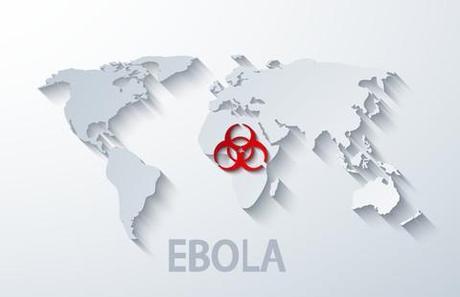
Thanks to the 24-hour news cycle, everyone has become familiar with the "Ebola crisis" over the last few months. Of course, it's important to keep in mind that news organizations these days will say just about anything to get viewers and ratings, and words like "crisis" tend to grab attention. In truth, there has been a lot of talk with very little actual information being disseminated. What do you really know about the Ebola virus, aside from the fact that a handful of patients have made it back to the U.S. for treatment? Some have recovered while others have perished, but the battle over this potentially deadly virus is really raging halfway across the world.
That said, it doesn't take much of an imagination to see how an outbreak could reach our shores, thanks to lax international travel standards. And if the worst should happen, there's no harm in being well-prepared. The preparation process begins with knowing what you're up against. Here are a few Ebola basics to get you started.
- Animals are natural carriers.
Five strains of the Ebola virus have been discovered, and scientists believe that Ebola originates in non-human primate species and can be carried by a variety of animals, including humans. While humans aren't natural carriers for the disease, we can contract and spread it. Although it is unlikely that the average American will come into contact with potential carriers like monkeys or even bats, it can't hurt to be aware of the fact that these animals could spread the disease.
- Ebola is spread through bodily fluids.
Ebola is not an airborne virus - rather it is spread through contact with bodily fluids. But if an infected party sneezes in your face, or sneezes on his hand and then shakes yours, you could become infected, as well. It could also spread through sharing utensils while eating or drinking, and of course, through sexual contact. Exposure can also occur after the death of a patient if living persons come into contact with fluids from the body postmortem.
- Ebola has a long incubation period.
It could take anywhere between two and twenty-one days to start showing signs of the Ebola virus following infection, but on average, symptoms appear about eight to ten days after exposure. And patients could first experience flu-like symptoms before more severe and indicative symptoms present.
- Early symptoms can be misleading.
The first symptoms to appear when a person is infected with Ebola can easily be confused with other illnesses, like influenza or the common cold. Fever, aches, fatigue, and sore throat are common in the early stages. And infections may occur, further confusing the issue. Some people even report hiccups as an early symptom. But eventually, symptoms will progress to include rashes, difficulty breathing, chest pain, vomiting, and the telltale external and internal bleeding that are the hallmarks of the virus.
- The virus affects multiple systems.
The Ebola virus attacks bodily organs, eventually leading to hemorrhaging, hence its original moniker: Ebola hemorrhagic fever. In addition to flu-like symptoms and respiratory issues, Ebola could cause liver and kidney failure in advanced stages. Eventually, multiple organs could suffer the effects of the virus.
- Risk stems from relation.
The people at highest risk for infection are those who are in the closest contact with infected patients. Family members and healthcare workers are at the top of the list, followed by mourners (if by some chance the deceased has not been diagnosed and quarantined).
- There is no cure, but treatment is possible.
Some estimate the risk of death from Ebola to be as high as 90% (although others say it could be closer to a 50-50 chance of survival). It's important to remember, though, that the countries where the virus is prevalent don't have the same level of medical support services as the United States. Of course, there is, as yet, no known cure for the Ebola virus, but if you or a loved one contracts it, the chances for survival are significantly increased with early and appropriate treatment. This could include maintaining oxygen and fluid levels, as well as treating subsequent infections contracted due to a weak immune system.
Ebola can certainly be deadly, but early testing and treatment could be the key to recovery. And those who survive the Ebola virus develop antibodies that are estimated to remain in the body for approximately ten years.





